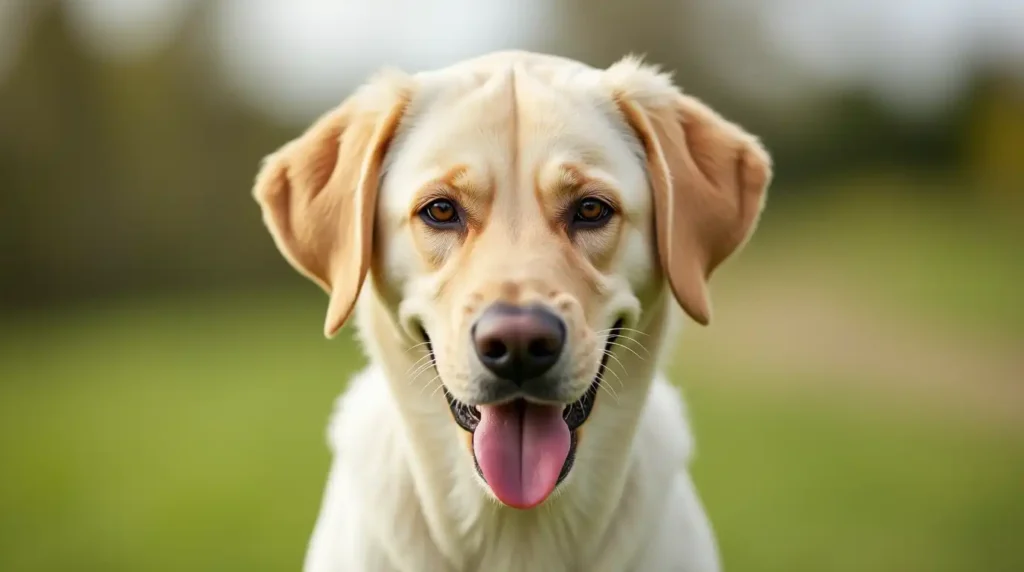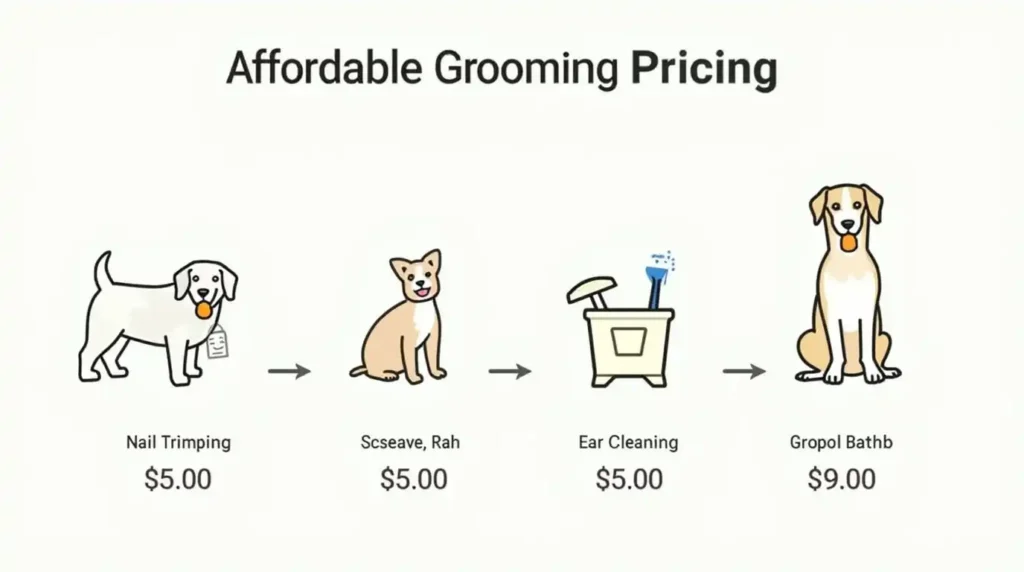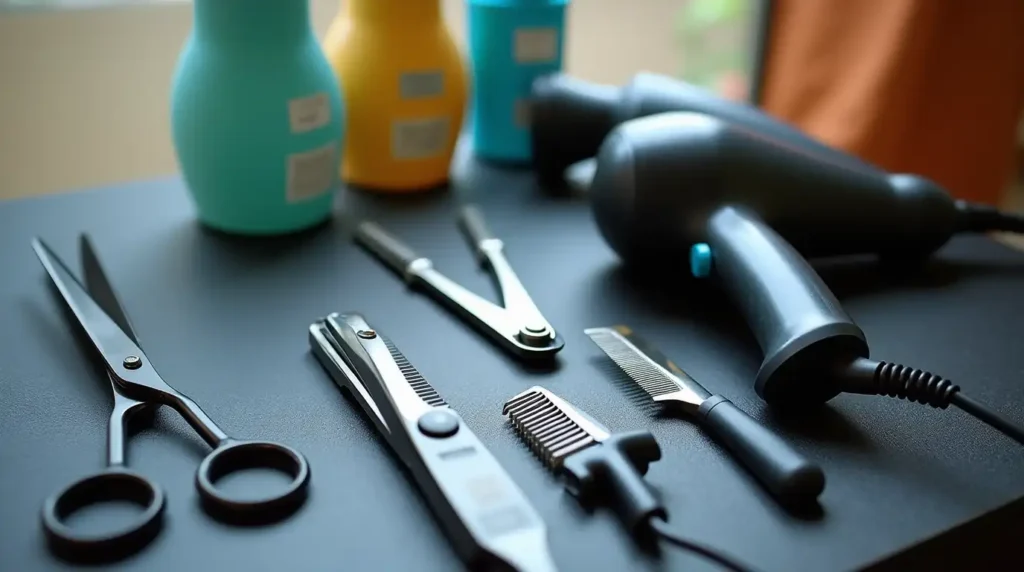Dog Grooming Costs – What You Need to Know
Why Understanding Dog Grooming Costs Matters
So, you’ve got a dog, and everything’s going great — walks in the park, endless playtime, and then… grooming. Yeah, didn’t think about that, did you? It’s one of those things that kind of sneaks up on you. You’re enjoying the puppy snuggles, and then someone mentions grooming, and you’re like, “Wait, how much is this gonna cost me?”
Here’s the thing — grooming your dog isn’t just about making them look nice (though, sure, that’s part of it). It’s a huge part of keeping your dog healthy and comfortable. That said, the price tag? It can be all over the place. One place might charge you $30, another might charge $90, and you’re left wondering, “Why the difference?”
In the U.S., Europe, and really pretty much everywhere, dog grooming has become a regular part of owning a dog. People are learning that grooming isn’t just for looks — it’s for health. But the prices vary so much that it’s no wonder some dog owners feel a little sticker shock. And, hey, we’ve all been there.
In this guide, I’m gonna break it down for you. Why does grooming cost what it does? What factors make the prices so different? And how do you make sure you’re not overpaying for something that you could easily manage? I got you covered.
The Importance of Dog Grooming
If you think dog grooming is just about keeping your pup looking cute, you’re missing the point. Sure, a freshly groomed dog might get some extra compliments, but grooming plays a much bigger role in their overall health and well-being. It’s about comfort, cleanliness, and even preventing health issues before they become serious.
1. Healthy Coat and Skin
Grooming helps keep your dog’s coat shiny, smooth, and free of tangles. Regular brushing removes dirt, debris, and dead hair, which can get trapped in their fur. For dogs with longer hair, mats and tangles are a huge issue. They can cause skin irritation and even lead to infections if left unchecked.
Even if your dog has short hair, regular grooming still helps to maintain a healthy coat. Plus, brushing stimulates blood flow to the skin, keeping it healthier overall. Think of it as a mini spa day for your dog — and we all know how good those are!
2. Preventing Health Problems
A clean dog is a healthy dog. Grooming allows you to spot any potential health problems early on, like skin rashes, cuts, or even parasites such as fleas and ticks. During grooming, you’ll have a chance to check for lumps, bumps, or anything that feels off, which can help catch issues before they become bigger problems.
It’s not just about the fur. Regular grooming also involves trimming your dog’s nails, cleaning their ears, and brushing their teeth. If left untreated, long nails can cause discomfort or even lead to joint problems. Dirty ears can get infected, and plaque buildup on their teeth can lead to serious dental issues.
3. Comfort and Hygiene
Dogs with long coats especially need regular grooming to stay comfortable. Their fur can easily get tangled, matted, or even matted to their skin, which isn’t just uncomfortable — it can also cause a lot of pain. Plus, all that dirt and debris stuck in their coat can lead to odor, which no one wants!
Grooming is also an essential part of keeping your dog clean. If your dog spends a lot of time outdoors or has a tendency to roll around in the dirt (because, well, they’re dogs), regular grooming can help keep them fresh and free of odors. After all, a happy dog is a clean dog!
4. Mental Well-Being
It’s not just about physical health — grooming can be a mental boost for your dog too. Some dogs actually find grooming sessions relaxing. Think of it like a little bonding time between you and your pet. It’s a chance for them to get some one-on-one attention, and that helps build trust.
Dogs that are used to regular grooming tend to be less stressed and more comfortable with the process. That means less anxiety when it’s time for their next grooming session. For dogs who don’t mind the process, it’s a little treat they get to look forward to!

Steps to Groom Your Dog
Grooming your dog might sound a bit intimidating at first, but with the right tools and some practice, it can actually become a fun bonding experience for both of you. Whether you’re doing a full grooming session or just maintaining between professional visits, here’s how to get started.
1. Gather the Right Tools
Before you start, make sure you have all the necessary tools. The basic grooming essentials you’ll need are:
- Brush or comb: Depending on your dog’s coat type, a slicker brush (for long hair) or a bristle brush (for short hair) will do the trick.
- Nail clippers: Use pet-safe nail clippers or a grinder to avoid hurting your dog’s nails.
- Ear cleaning solution: For checking and cleaning ears, especially if your dog is prone to ear infections.
- Shampoo and conditioner: Make sure you’re using a dog-specific shampoo to avoid irritating their skin.
- Towel and blow dryer: After the bath, your dog will need a good towel dry. A low-heat blow dryer works well for long-haired dogs.
2. Brush Your Dog’s Coat
Before you even think about bathing your dog, give them a good brushing. This helps remove tangles, dirt, and loose fur. For dogs with long coats, make sure to be gentle and work through any mats carefully. If you come across tangles, avoid pulling — you can either use a detangler or simply cut them out if they’re stubborn.
Brushing your dog also helps distribute natural oils, which keeps their coat shiny and healthy. For short-haired dogs, brushing a couple of times a week is usually enough. Long-haired dogs, on the other hand, may need brushing daily to keep things manageable.
3. Trim Your Dog’s Nails
Trimming your dog’s nails is an important part of grooming. Long nails can be painful for your dog and even lead to joint problems if left unchecked. If you’re trimming at home, be sure to use dog-specific nail clippers and don’t cut too close to the quick (the pink area inside the nail) — it can be painful and cause bleeding.
If you’re nervous about trimming, it’s okay to take things slow or consult a groomer. Some dogs may need regular nail trims every couple of weeks, while others may only need it once a month.
4. Clean Your Dog’s Ears
Regular ear cleaning is important to avoid infections, especially for dogs with floppy ears. Use a gentle ear-cleaning solution (made for dogs, of course) and a cotton ball or pad. Don’t stick anything too deep into their ear canal — just clean the outer parts gently.
If you notice a lot of buildup, bad odor, or redness, it could indicate an infection, so it’s best to visit the vet.
5. Bathe Your Dog
Bathing should be a pleasant experience — if your dog enjoys water, make it fun! Use lukewarm water and a dog-friendly shampoo (don’t use human shampoo — it’s not safe for their skin). Start by wetting your dog thoroughly and then lathering the shampoo, working it in gently. Rinse thoroughly and make sure all the shampoo is washed out to avoid skin irritation.
Once you’re done, towel dry your dog to get rid of excess water. For dogs with long hair, you might want to use a blow dryer (on a low setting) to help dry them out completely.
6. Brush Again After the Bath
After the bath, give your dog another brush. This helps detangle any knots caused by the water and ensures their coat dries smoothly. It also helps you spot any skin issues or irritations that might need attention.
7. Check for Skin Issues
While grooming, it’s a good idea to check your dog’s skin for any signs of irritation, redness, bumps, or parasites. If you notice anything unusual, consult your vet to rule out infections or allergies. Regular grooming gives you the opportunity to catch these issues early before they become bigger problems.
Grooming your dog can be a fulfilling experience, but it takes time and patience. Some dogs may be more sensitive than others, so always take breaks if they seem stressed. And if your dog isn’t too keen on grooming, it may take a few sessions to get them comfortable. But, with practice, you’ll both get the hang of it — and before you know it, grooming will be just another part of your routine.

Common Grooming Mistakes and How to Avoid Them
Even if you’re new to grooming your dog, don’t worry — it’s a learning process. However, there are a few mistakes that can make the experience more stressful for both you and your dog. Avoiding these common missteps will not only help keep your dog comfortable but also ensure that grooming becomes a positive experience over time.
1. Brushing Too Roughly
We’ve all been there — you get a tangle in your dog’s fur and want to get it out ASAP. But brushing too roughly or pulling on mats can actually hurt your dog and cause discomfort. If your dog has mats, try to use a detangler spray or take extra care when gently working through the tangles.
How to avoid it: Be gentle and patient. Use the right brush for your dog’s coat type. If you come across mats, don’t yank them out — instead, use your fingers or a comb to slowly break them apart. For tough mats, you may need to carefully cut them with grooming scissors.
2. Overbathing
It’s tempting to want to give your dog a bath every time they get dirty, but overbathing can actually dry out their skin. Dog shampoos can strip away natural oils that protect their coat, leading to dryness or irritation.
How to avoid it: Bathe your dog only when necessary — usually once every 4-6 weeks. In between baths, you can use dry shampoo or simply rinse them off with water. Be sure to always use dog-specific shampoo to maintain their skin’s natural balance.
3. Cutting Nails Too Short
Cutting your dog’s nails too short can lead to a painful experience. The “quick” is the pink area inside the nail, and if you cut it, it can bleed and cause your dog a lot of pain.
How to avoid it: When trimming your dog’s nails, only trim the tip — about 1/8 inch away from the quick. If you’re not sure where the quick is, try using a nail grinder instead of clippers, as it gives you more control and reduces the risk of cutting too short.
4. Not Regularly Cleaning Ears
If your dog has floppy ears or a tendency to get dirty, regular ear cleaning is essential. Not cleaning your dog’s ears regularly can lead to ear infections, especially in breeds that are prone to them, like Cocker Spaniels or Basset Hounds.
How to avoid it: Check and clean your dog’s ears at least once a month, or more often if they seem to get dirty quickly. Use a gentle ear cleaner recommended by your vet. Never stick anything into the ear canal — just clean the outer ear and wipe away any debris.
5. Using Human Grooming Products
While it may seem like a quick fix, human grooming products are not safe for dogs. Human shampoo, conditioners, and other products can irritate your dog’s skin, especially if they have allergies or sensitive skin.
How to avoid it: Always use products that are designed specifically for dogs. Look for shampoos that are free of harsh chemicals, fragrances, and dyes, and make sure they’re pH-balanced for a dog’s skin.
6. Grooming When Your Dog Is Stressed
Some dogs really don’t enjoy the grooming process — and forcing them through a session when they’re stressed or anxious can make things worse. If your dog is showing signs of stress (like whining, pulling away, or trying to escape), don’t push them too hard.
How to avoid it: Take your time and make grooming a positive experience. Start slow with shorter sessions, giving your dog plenty of breaks. You can also use treats and praise to reward good behavior. If your dog is severely anxious, consider seeking help from a professional groomer or trainer.

Tips for Easing the Grooming Process
- Start early: The earlier you start grooming your dog, the more comfortable they’ll become with it.
- Keep grooming sessions short: Especially for younger dogs or those new to grooming. Keep it fun and low-stress.
- Use positive reinforcement: Reward your dog with treats and praise after each grooming session to create a positive association.
By avoiding these common grooming mistakes, you’ll not only make the process easier for yourself but also ensure your dog’s grooming experience is as stress-free and comfortable as possible.
Frequently Asked Questions (FAQ)
1. Can I use human grooming products on my dog?
While it may seem like a good idea in a pinch, it’s not recommended. Human grooming products, like shampoos and conditioners, are formulated for human skin, which has a different pH balance than dogs. Using these products can irritate your dog’s skin, leading to dryness, rashes, or other discomforts.
Solution: Always use grooming products that are specifically made for dogs. These are designed to be gentle on their skin and keep their coat healthy without causing irritation.
2. How often should I groom my dog?
How often you groom your dog depends on their breed, coat type, and activity level. For example, long-haired breeds like Poodles or Shih Tzus may need grooming every 4-6 weeks to avoid matting, while short-haired dogs like Beagles may only need it once every 8-12 weeks.
General guideline: Most dogs benefit from brushing at least once a week, and many need a bath once a month. If you’re not sure, ask your groomer for recommendations based on your dog’s breed and coat.
3. Is grooming suitable for puppies?
Absolutely! In fact, the earlier you start grooming your puppy, the easier it will be for them to get used to the process. Puppies typically start getting their first grooming sessions around 12 weeks old, but be gentle and keep the sessions short to avoid overwhelming them.
Tip: Make grooming a fun experience by rewarding your puppy with treats and praise after each session. This helps them associate grooming with something positive.
4. How do I know if I’m overpaying for grooming services?
Grooming prices can vary based on several factors, such as your dog’s size, coat type, and location. However, if you feel that the price is unusually high or the service doesn’t match the cost, it might be time to shop around.
How to avoid overpaying: Ask for an itemized list of services and compare prices at different groomers in your area. Make sure you’re getting value for the money you’re spending — if your dog’s grooming includes extra services like nail trimming, ear cleaning, or a bath, it may justify a higher price.
5. Can I groom my dog at home instead of using a groomer?
Yes, you can absolutely groom your dog at home! Basic grooming tasks like brushing, nail trimming, and bathing can be done by most dog owners with the right tools. However, if your dog has a complex coat, or if you’re unsure about trimming nails or fur, it’s always a good idea to consult with a professional groomer or take them in for a session every few months.
Tip: If you’re grooming at home, always take your time and stay patient. It might take a few tries to get the process just right, but it’s a great way to bond with your dog.
6. What if my dog doesn’t like grooming?
Some dogs just don’t like being groomed. It’s common for dogs to feel anxious or stressed during grooming sessions, especially if they’re not used to it. If your dog is resisting grooming, take a break and try again later.
How to make it easier: Start slow and gradually introduce your dog to grooming. Use treats, praise, and positive reinforcement to reward your dog for staying calm. If grooming anxiety is severe, consider hiring a professional groomer or a dog trainer to help.
Conclusion: Wrapping Up Dog Grooming Costs and Care
So, there you have it — a breakdown of everything you need to know about dog grooming costs and why grooming is so important for your pup’s health and well-being. Whether you’re planning to take your dog to a professional groomer or handle grooming tasks yourself, understanding the costs and process will help you make the best choices for both your dog and your wallet.
At the end of the day, grooming isn’t just about keeping your dog looking their best. It’s about keeping them comfortable, healthy, and happy. Regular grooming helps prevent skin issues, reduces shedding, and can even improve your dog’s mood. And while the costs can add up, the long-term benefits — including early detection of potential health issues — make grooming a worthwhile investment.
Have you tried grooming your dog at home? Or maybe you’ve had some experiences with grooming services that you’d like to share? Let us know in the comments below — we’d love to hear your thoughts!
If you found this guide helpful, check out our other articles on dog care, such as “How to Choose the Right Dog Food“ and “Essential Tips for Training Your Dog“. We’ve got plenty of resources to help you keep your dog healthy and happy.

